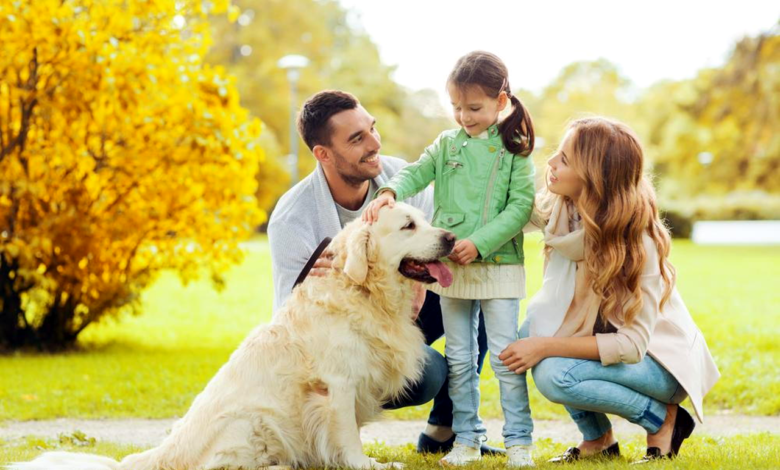
Understanding Pet Behavior: Decoding Your Pet’s Signals
Pet ownership is a joyous experience filled with love, companionship, and sometimes, a bit of mystery. As pet owners, we often find ourselves pondering the thoughts and feelings of our furry friends. Understanding pet behavior is crucial for building a strong bond and addressing any potential issues promptly.
Read More: The Role of Pet-Friendly Communities: Creating Safe and Inclusive Spaces for Pets and Their Owners
Understanding Pet Behavior

Brief Overview of Pet Behavior
Pet behavior is a fascinating subject that encompasses a variety of actions and reactions exhibited by our beloved pets. From dogs and cats to birds and reptiles, each species has its unique way of communicating with their owners.
Importance of Understanding Pet Signals
Deciphering your pet’s signals can prevent misunderstandings and contribute to a healthier, happier relationship between you and your furry companion. In this article, we’ll delve into the common behaviors exhibited by pets and provide insights into decoding their signals.
Common Pet Behaviors
Body Language
One of the primary ways pets communicate is through body language. Understanding the nuances of tail wagging, ear movements, and posture can reveal a lot about your pet’s emotional state.
Vocalizations
Pets express themselves vocally through meows, barks, chirps, and more. Examining the context and types of sounds can help decipher their needs and emotions.
Eating Habits
Changes in eating habits can be indicative of underlying health issues or emotional stress. Observing your pet’s food preferences and dislikes is crucial for their overall well-being.
Sleeping Patterns
Analyzing your pet’s sleeping patterns provides insights into their comfort and health. Recognizing signs of sleep disturbances allows for early intervention.
Decoding Body Language
Tail Wagging
Contrary to popular belief, not all tail wags are signs of joy. Different speeds and positions can convey various emotions, including fear, excitement, or submission.
Ear Movements
Pets use their ears to express emotions. Forward-facing ears often indicate curiosity, while flattened ears may signal fear or aggression.
Purring and Meowing
Cats, in particular, communicate extensively through purring and meowing. Understanding the tones and frequencies helps decipher their messages.
Posture and Stance
A pet’s posture speaks volumes about its mood. Whether it’s a relaxed sprawl or a tense crouch, observing their stance aids in understanding their emotional state.
Understanding Vocalizations
Types of Pet Sounds
Different pets have distinct vocalizations. Knowing the types of sounds your pet makes helps in identifying their needs, whether it’s hunger, playfulness, or distress.
Contextual Analysis of Sounds
The context in which your pet makes sounds is crucial for interpretation. A bark during play differs from a bark signaling danger or discomfort.
Responding to Pet Vocalizations
Acknowledging and responding to your pet’s vocal cues reinforces the bond between you and your furry friend. It also ensures that their needs are met promptly.
Investigating Eating Habits
Normal Eating Behavior
Establishing a baseline for your pet’s eating habits helps in identifying deviations that may indicate health concerns. Regular monitoring is key to their nutritional well-being.
Changes in Appetite
Sudden changes in appetite can be a red flag. Whether it’s increased or decreased food intake, understanding the reasons behind these changes is crucial for their health.
Food Preferences and Dislikes
Just like humans, pets have preferences. Observing their reactions to different foods helps tailor their diet to their liking while ensuring it meets nutritional requirements.
Analyzing Sleeping Patterns

Normal Sleeping Behavior
Understanding the typical sleep patterns of your pet is essential. Whether they’re a cat that naps frequently or a dog with a consistent sleep schedule, deviations can indicate health issues.
Signs of Sleep Disturbances
Unusual behaviors during sleep, such as excessive twitching or waking up frequently, may signify discomfort or underlying health problems. Addressing these issues promptly ensures your pet’s well-being.
Creating a Comfortable Sleeping Environment
Providing a comfortable and quiet sleeping space for your pet promotes restful sleep. Factors like temperature, bedding, and noise levels contribute to their overall sleep quality.
Factors Influencing Pet Behavior
Health Issues
Undiagnosed health problems can significantly impact pet behavior. Regular veterinary check-ups and prompt attention to behavioral changes contribute to a pet’s overall health.
Environmental Factors
Changes in the environment, such as a new home, the addition of a new family member, or even rearranging furniture, can influence a pet’s behavior. Gradual introductions and familiarization help them adjust.
Emotional Well-being
Pets experience emotions, and their well-being is influenced by factors like attention, love, and a sense of security. Recognizing and addressing emotional needs is crucial for a happy and content pet.
Positive Reinforcement in Pet Training
Importance of Positive Reinforcement
Positive reinforcement is a powerful tool in shaping desired behaviors. Rewarding good behavior strengthens the bond between pet and owner and makes training more effective.
Reward-Based Training Techniques
Using treats, praise, and affection as rewards encourages pets to repeat desired actions. Consistency and patience are key in positive reinforcement training.
Building Trust with Your Pet
Trust is the foundation of a strong bond. Establishing trust through positive interactions and understanding your pet’s cues creates a harmonious relationship.
Seeking Professional Help
When to Consult a Veterinarian
Certain behavioral changes may indicate underlying health issues. Consulting a veterinarian is crucial to rule out medical conditions affecting your pet’s behavior.
Professional Trainers and Behaviorists
For more complex behavior issues, seeking the expertise of professional trainers or behaviorists can provide tailored solutions and guidance.
Online Resources for Pet Behavior
The internet offers a wealth of information on pet behavior. Trusted online resources can supplement your understanding and provide helpful tips for common issues.
Building a Strong Bond with Your Pet
Spending Quality Time Together
Quality time strengthens the bond between pet and owner. Engaging in activities your pet enjoys fosters a deeper connection.
Establishing Routine and Consistency
Pets thrive on routine. Establishing consistent feeding, play, and sleep schedules creates a sense of predictability and security for your furry friend.
Being Attentive to Your Pet’s Needs
An attentive owner is attuned to their pet’s needs. Whether it’s a longing gaze or a playful nudge, being attentive builds trust and understanding.
Case Studies
Real-life Examples of Decoding Pet Behavior
Explore real-life scenarios where pet owners successfully decoded their pet’s signals and addressed behavioral challenges, showcasing the effectiveness of understanding pet behavior.
Success Stories in Addressing Behavior Issues
Highlight success stories where pet owners, through patience and understanding, overcame behavior issues, reinforcing the importance of proactive and positive approaches.
Challenges in Understanding Pet Behavior
Misinterpretation of Signals
Discuss common pitfalls in interpreting pet behavior and how pet owners can avoid miscommunication for a more harmonious relationship.
Addressing Behavioral Challenges
Offer practical tips and strategies for addressing common behavior challenges, emphasizing the importance of patience and consistency.
Continuous Learning and Adaptation
Pet behavior is dynamic. Encourage pet owners to stay informed, adapt to their pet’s changing needs, and continuously learn to foster a thriving relationship.
The Connection between Pet and Owner

The Emotional Bond
Explore the emotional bond between pets and their owners, highlighting the reciprocal nature of the relationship and the joy it brings to both parties.
Reciprocal Communication
Celebrate the unique ways pets communicate with their owners, showcasing the beauty of a relationship where understanding goes both ways.
Strengthening the Human-Animal Relationship
Offer tips on strengthening the bond between pet and owner, creating a lifelong connection built on love, trust, and understanding.
Read More: The Role of Socialization in Pet Behavior
The Final Words
Summarizing Key Points
Recap the key takeaways from the article, emphasizing the importance of understanding pet behavior for a fulfilling and rewarding relationship.
Encouraging Pet Owners to Connect Deeper
Conclude with an encouragement for pet owners to invest time and effort in understanding their pet’s signals, fostering a deeper connection and enhancing the overall quality of the human-animal bond.






